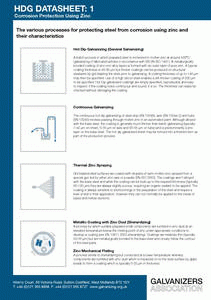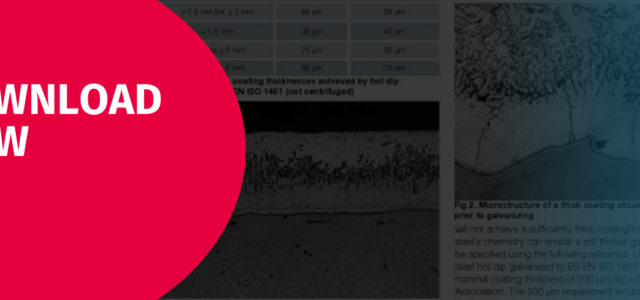 The various processes for protecting steel from corrosion using zinc coatings and their characteristics
The various processes for protecting steel from corrosion using zinc coatings and their characteristics
- Hot dip galvanizing (general galvanizing)
- Continuous galvanizing
- Thermal zinc spraying
- Metallic coating with zinc dust (sherardizing)
- Zinc mechanical plating
- Zinc-rich painting
- Zinc electro-plating
- Cathodic protection
Want to have a pdf version of this datasheet? Click the button below.
Hot dip galvanizing coating
A metalurgically bonded coating of zinc-iron alloy is formed with an outer layer of pure zinc. A typical zinc coating thickness is 45-85 µm, but thicker coatings can be produced on structural steelwork by grit blasting the steelwork prior to galvanizing. Read more in the datasheet…
Continuous galvanizing coating
The continuous hot dip galvanizing of steel strip, wire and tube involves passing through molten zinc in an automated plant. Although alloyed with base steel, the zinc coating is generally much thinner than batch galvanizing. Read more in the datasheet…
Thermal zinc spraying coating
The zinc coatings aren`t alloyed with the base steel and while the coating can be built-up to the required thickness, they are always slightly porous. Read more in the datasheet…
Metallic Coating with Zinc Dust (Sherardizing)
A process by which suitably prepared small components are tumbled in zinc dust at an elevated temperature below the melting point of zinc under appropriate conditions to develop a coating. Zinc coatings are relatively thin (typically 20-30 μm)…

